Discover the transformative process of painting your garage door to mimic the elegant appeal of wood.
Achieving a wood-like finish on your garage door is an excellent way to enhance its aesthetic appeal without breaking the bank. This article provides a comprehensive guide on how to transform your garage door’s appearance using paint. We will explore the necessary materials, preparation steps, and painting techniques to help you achieve a realistic wood grain effect.
Each step is explained in detail, ensuring you can execute this project with precision and confidence. So, whether you’re a seasoned DIY enthusiast or a first-timer, this guide has you covered. Stay tuned to uncover the secrets of giving your garage door a wooden facelift.
Key takeaways:
- Choose acrylic latex exterior paint for weather resistance and flexibility.
- Use semi-gloss finishes for a natural wood sheen and easy cleaning.
- Select two contrast colors for the base and detailing to create depth.
- Use synthetic brushes for base painting and smaller round-tipped brushes for grain lines.
- Invest in graining tools for a realistic wood grain effect.
Choosing the Right Paint and Brushes for Garage Door
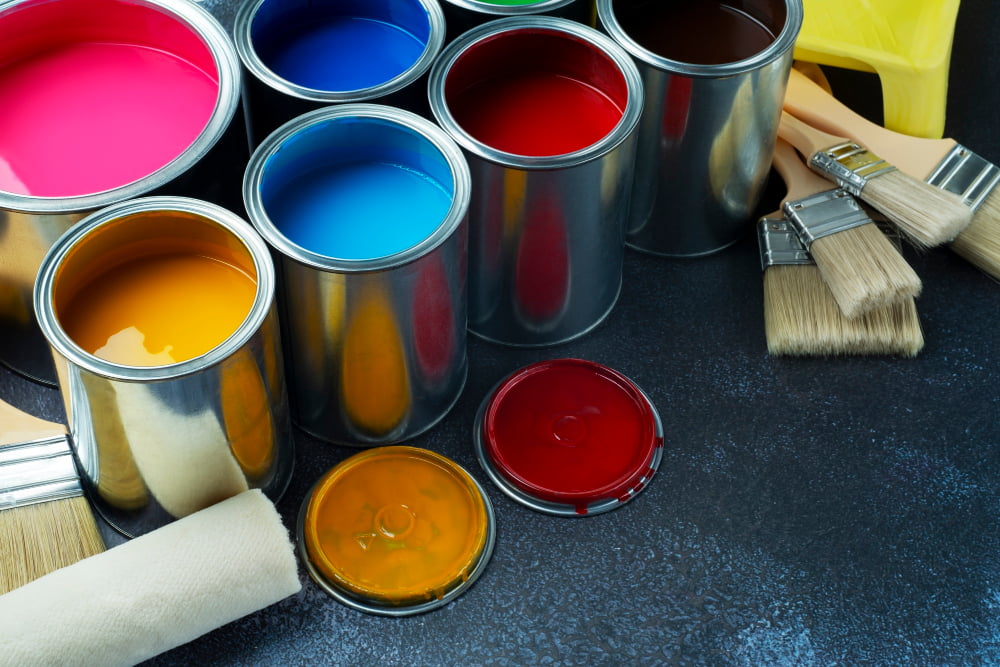
When selecting paint, opt for acrylic latex exterior paint. It’s not only weather-resistant but also expands and contracts with the garage door, which is especially vital during seasonal changes. Semi-gloss finishes are the best choice as they mimic the natural sheen of wood and are easier to clean.
For that true, faux-wood finish, it’s crucial to pick two contrast colors to create the desired depth. One should be a lighter tone for the base color, and the other a darker shade for detailing. Different types of wood have different shades, so referencing a picture of the wood type you want to mimic can be extremely useful.
As for brushes, synthetic brushes that have a chiseled edge work better for base painting, as they create even strokes. Purchase smaller round-tipped brushes to create grain lines and details. For a real-feathered grain look, invest in graining tools. They come in various types such as check rollers, rocker, whisk broom, etc. Experiment with any combination to decide which particular graining tool gives the most desired effect.
Remember, investing in quality materials from the outset pays off in terms of the finish and durability of the painted door.
Preparing the Garage Door for Painting
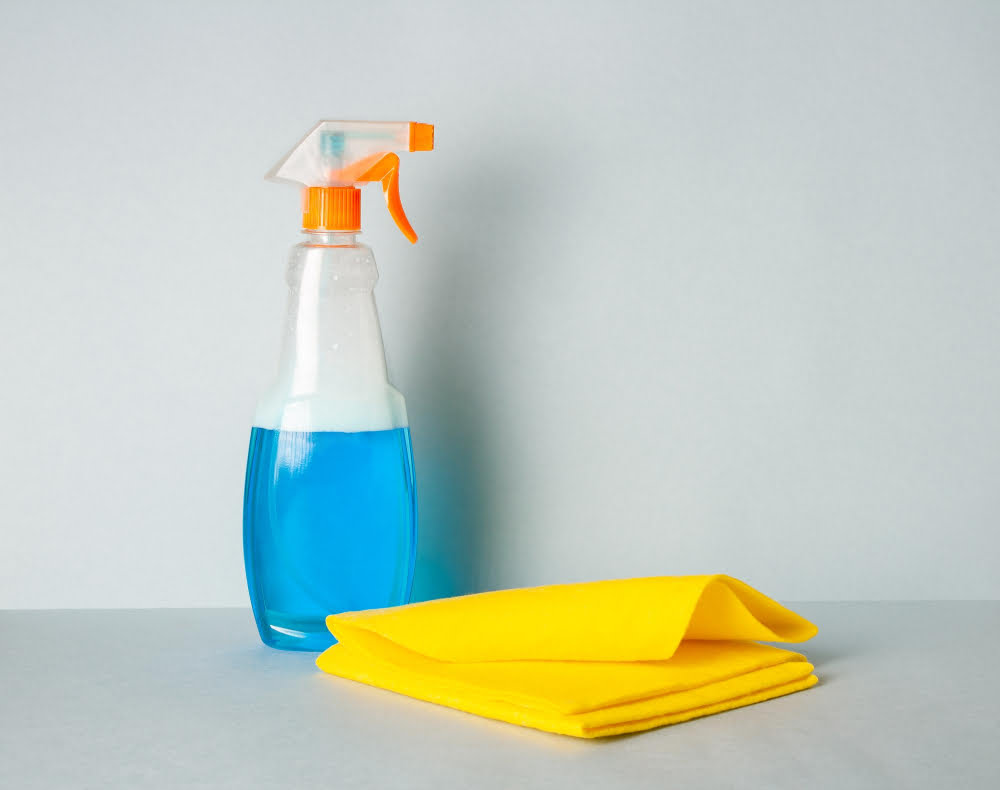
To begin the transformation of your garage door, thorough preparation is essential. Begin by inspecting the door, assessing it for any visible damage such as cracks or dents, and considering any needed repairs before commencing with the painting process.
Next, thoroughly clean the surface of the door. A mixture of warm water and mild detergent will work effectively to remove any grime, dust, or residues that might hinder the adherence of the primer and paint.
After the door is impeccably clean, lightly sand the surface. Sanding will help to create a slightly roughened texture that allows the primer and paint to adhere better. Make sure to use a fine-grit sandpaper and be gentle to avoid creating scratches or gouges.
Lastly, wipe down the door with a damp cloth to remove all the dust and particles created by the sanding process. Let your garage door dry completely before moving onto painting. In this way, you provide a smooth, ready-to-paint surface that can maximize the effectiveness of the subsequent steps, directly impacting the final results.
Primer Application Techniques for Garage Doors
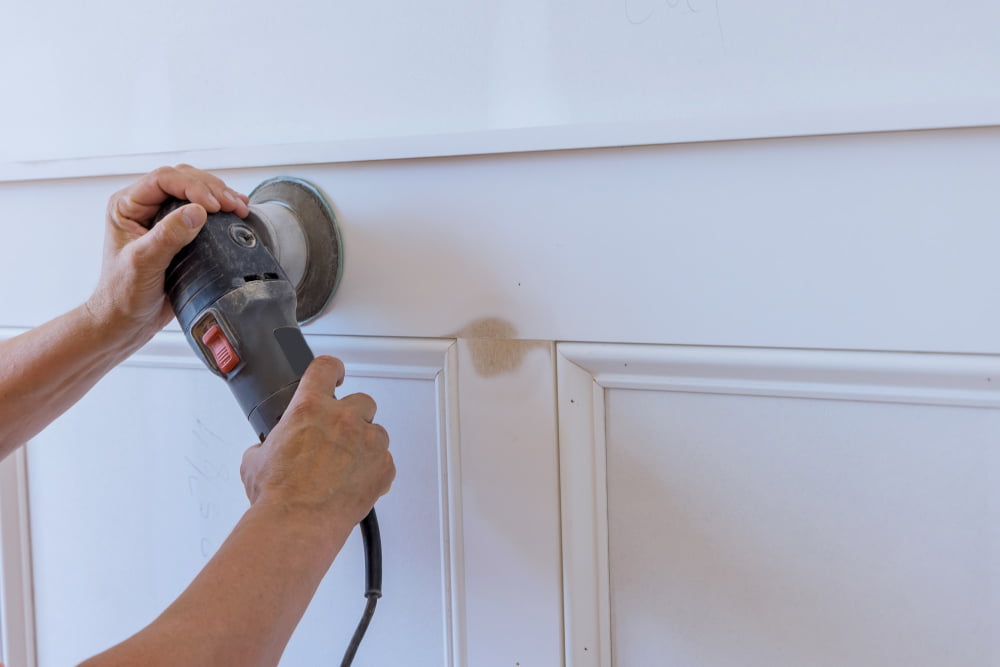
A primer, acting as an intermediary between the raw material of your garage door and the paint layers, enhances durability and adds longevity to the paint job. The preparatory work is as critical as the artistic application when aiming for a garage door that resembles wood.
Here are the key steps:
- Clean the door. Remove all dust, grime, and loose chips to ensure a smooth, clean surface for primer application. A pressure washer or a standard garden hose coupled with a scrub brush will be effective.
- Repair any visible damage. Sand down rough patches and fill in holes with suitable material. Run your hands over the door to feel for any imperfections that your eyes may miss.
- Mask off areas. Cover any hardware, windows, or areas not to be painted with painter’s tape and plastic sheets.
- Apply primer. Use a good quality exterior primer compatible with the door material and chosen paint. Applying two coats ensures a smoother finish. Use a mixture of brush and roller for the different sections of the door, starting from the top and working your way down.
- Allow ample drying time. Always adhere to the specified drying time on your primer’s instructions. Rushing this step can lead to a compromised paint job.
Remember this isn’t the time to detail yet but to establish a solid foundation for the basecoat that will follow. A good start is half done indeed!
Applying the Base Coat On a Garage Door
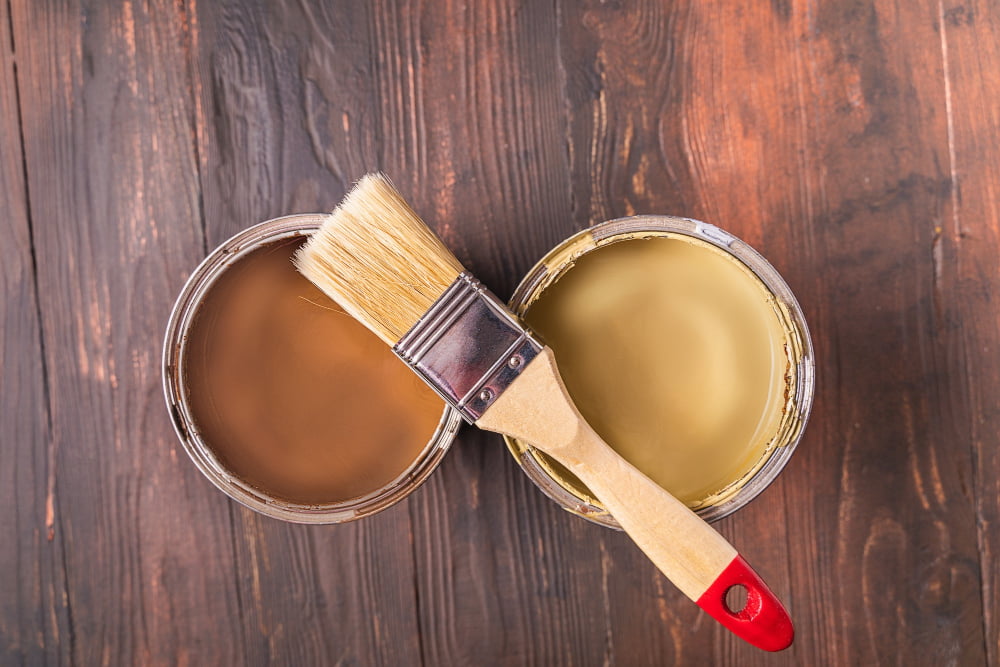
Once the surface is primed, applying the base coat is the next crucial step. This process starts by selecting the right paint color. Typically, a light brown shade works best to imitate natural wood.
First, ensure that the paint is thoroughly mixed for a consistent color. Using a high-quality nylon or polyester brush, begin painting the door from the top down to avoid drips. Cover all areas evenly and avoid overloading the brush to prevent paint runs.
Remember, more thin layers result in a smoother finish than one thick one. Therefore, two or three coats may be necessary, depending on the quality of the paint and the color of the primer. Allow each coat to fully dry before applying the next.
These steps provide the foundation for creating a realistic faux wood look. The base coat sets the tone for the following detailing process, so it’s essential to take the necessary time to apply it properly. Remember, too, that the base coat needs to be thoroughly dry before continuing to the next stage.
Plan this part of the process for a warm, dry day, as humidity and cold can affect drying time. Having patience at this stage will greatly affect the final result.
Creating Faux Wood Grain On Garage Door

Let’s dive right into the transformation process. The focus will be on technique and choosing the right tools to create the desired aesthetic.
To start, you’ll need to get a graining tool, available at most hardware stores or online. This device lends to the streaky, organic look of genuine wood.
Next, you’ll need a secondary, preferably darker paint color to create contrast. Mix it with a glaze following the manufacturer’s instructions. This will slow drying, allowing more time to mimic the look of wood grain.
Time for action! Apply the glaze-paint mixture to a portion of the garage door. With the grain tool, use a rocking motion as you move top to bottom to create wood-like streaks. Remember, natural wood isn’t uniform. Mix straight lines, waves, and knots to mimic a realistic array of tree grain.
After glazing one section, move on to the next. Don’t let sections dry out between applications to prevent a disjointed look.
Finally, practice makes perfect. If this is your first time, experiment on a scrap piece of metal or wood first. Once you get the hang of the rocking movement, you’ll better anticipate the final result on your garage door.
Remember, creating the faux wood effect can be fun but requires patience. Consider this a project for the weekend, not an hour-long endeavor. Embrace the process and bring your garage door to life with a wooden personality.
Masking and Detailing Techniques for Realistic Wood Effect
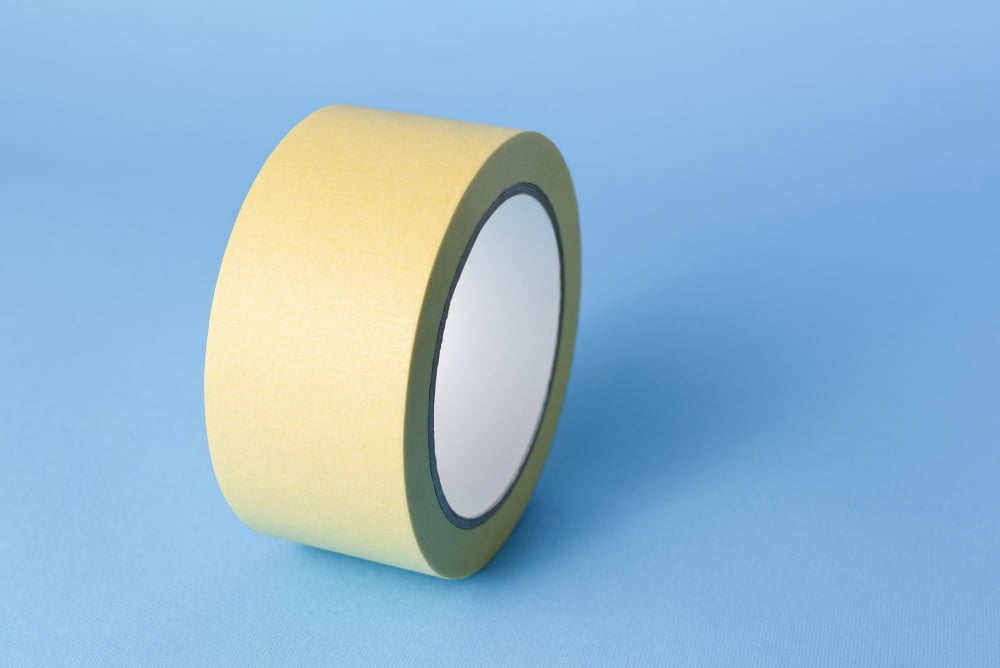
For an authentic wood effect, details matter. To start, create ‘planks’ by using masking tape. Lay the tape vertically, according to your desired plank width, dividing your door into several sections. Remember, variation in size will add to the realism.
Once the ‘planks’ are ready, move to add grain details. An essential tip is to always drag your graining tool in one direction, mimicking the natural growth of wood. Blend different shades of your paint to create depth and variety in the wood grain. Try using lighter shades in the middle and darker around the edges of each ‘plank’.
Lastly, knots are vital in a convincing wood effect. With a smaller paintbrush, create some oval or circular imperfections here and there on the ‘planks’. Follow with the graining tool to soften the edges, making the ‘knot’ appear organic. Be sparing with knots, too many can make it look unrealistic.
Never rush these detailing steps. Time and patience bring about the most realistic effects, producing a garage door with the undeniable aesthetics of natural wood.
Sealing and Protecting Painted Garage Door
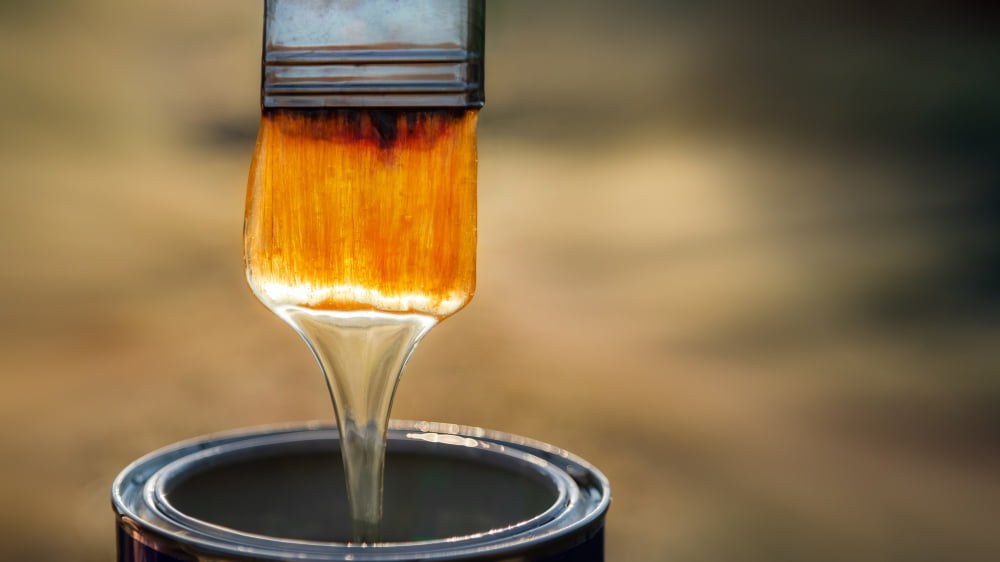
Once the meticulous task of painting and designing is complete, the significant step is to protect your hard work. This requires a durable sealant to shield against peeling and weather effects. The best approach is using a clear, exterior polyurethane that is weather resistant. You should apply it using a high-quality synthetic brush for proper coverage, ensuring every nook and cranny is attended to.
Consider a sealant with UV resistance which will keep the color from fading in the sun. Make sure to give it at least 24 to 48 hours to properly dry before using the garage door as normal.
Subsequent sealant layers can enhance protection, especially for doors exposed to harsh weather conditions. Be sure to allow ample drying time between coats, according to product directions.
To maintain the longevity of your work, routine checks and touch-ups are helpful. If you see any chips or scratches appearing, the sealant can be reapplied to that area to prevent further damage.
Appropriate Weather Conditions for Painting Garage Doors

Temperature and humidity play significant roles in how well your paint job will turn out. Ideally, paint when the weather is neither too hot nor too cold. A temperature range between 50 and 70 degrees Fahrenheit is best as it allows the paint to dry evenly without forming bubbles or cracks.
Avoid working in direct sunlight, as it could cause the paint to dry too quickly and unevenly. It’s also vital to check the weather forecast. Do not paint if rain or high humidity is expected within the next 24 hours as moisture can ruin a freshly painted surface. Finally, consider wind speed. If it’s too windy, dust and debris may stick to the paint, causing imperfections.
Maintenance Tips for Faux Painted Garage Door

Maintaining your faux-painted garage door ensures it retains its appealing wood look for a longer duration. Here are some nifty strategies to help.
1. Frequent Cleaning: Rinse the door with a mild, non-abrasive soap and water at least once a month to remove grime and dust. Use a soft sponge to avoid scratching the surface.
2. Check for Scratches and Peeling: Inspect the door regularly for scratches or peeling paint. If found, a touch-up might be necessary to avoid further damage or fading.
3. Avoid Harsh Chemicals: Do not use strong solvents or chemicals for cleaning, as they can damage the paintwork.
4. Annually Refresh the Sealer: Over time, the protective topcoat that shields the paint from elements like water and UV rays may wear down. Reapplying a fresh coat annually helps in safeguarding the paint job.
5. Regular Lubrication: While this won’t directly affect the paint, lubricating moving parts of the door ensures smooth operation and prevents undue stress on the door, which could lead to unexpected damage.
Remember, the key to keeping your garage door looking like new is a consistent maintenance schedule.
FAQ
Can garage doors be painted to look like wood?
Indeed, garage doors can be painted to emulate the aesthetic appearance of wood.
Can you make a metal garage door look like wood?
Yes, a metal garage door can be made to look like wood by cleaning it thoroughly and applying a stain carefully to achieve a wood grain effect, ensuring the door is not too hot or exposed to direct sunlight during the process.
What materials and tools are essential for painting a garage door to simulate wood?
For painting a garage door to simulate wood, one requires a primer, wood grain paint, paint brushes, paint roller, paint tray, painter’s tape, and a wood grain tool.
How does the process of faux wood graining on a garage door work?
The process of faux wood graining on a garage door involves meticulously painting a new layer over the existing surface to replicate the natural patterns and shades of real wood.
What are the best paint types and colors for mimicking wood on a garage door?
Acrylic latex paint in shades of brown such as walnut or maple can be the best choice for mimicking wood on a garage door.